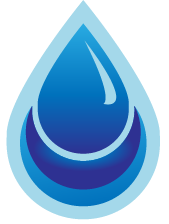Household Size and Usage
WHAT TO KNOW ABOUT HOME WATER SOLUTIONS
How to Properly Size Home Water Treatment Solutions
The Square Footage of Your Home Is Not the Most Important Variable in Home Water Treatment Sizing
Sizing home water treatment solutions is primarily based on two variables: how much water your household uses and the unique properties of the water. A water softener or reverse osmosis system that isn’t sized correctly for your household can lead to poor performance, increased maintenance and unnecessary expense. At Candid Water Solutions, we design systems that match your actual usage—not just your square footage.
WHAT TO KNOW ABOUT SYSTEM SIZE
Why Household Size Affects System Sizing
Although households are different in terms of their water usage, there is a typical range that most families fall into. In most Phoenix households, each person uses 75–100 gallons of water per day for bathing, washing, cooking and drinking. Estimating your home’s daily demand is straightforward; just multiply that by your household size.
You then need to look at water treatment solutions and system sizes that would be adequate to treat that level of usage. Phoenix hardness levels range from 13 to 17 grains per gallon (gpg), so:
- A two-person household using 150 gallons per day with water hardness of 17 gpg produces a 2,550 grain per day load.
- A family of five could generate over 6,300 grains per day, requiring a larger softener and longer RO runtime to meet demand.
WHY THE RIGHT system MATTERS
What Happens When a System Is Undersized
Homeowners who have had basic softeners or whole-house RO systems installed without sizing consultation often notice problems such as:
- Frequent softener regeneration, leading to higher salt and water use
- RO tanks that run empty during dinner prep or after multiple water draws
- Drops in water pressure when more than one fixture runs
- Shortened filter or membrane life due to overuse
- Compromised water quality if flow rates exceed filtration capacity
Sizing point-of-use under-sink RO systems is a little different because your kitchen sink accounts for a relatively small part of your water usage. However, sizing does still matter for households that drink a lot of RO water, use RO water for cooking and have thirsty pets.
The flow rate and accelerated wear of membranes are the main problems attributed to undersizing, but system longevity is also a real concern. You’ll end up spending more in the long run due to premature replacement and maintenance if the system isn’t properly sized.
Choosing the Right Softener for Your Family
Candid Water Solutions sizes softeners based on grain capacity, not just square footage.
Some typical configurations:
- 1–2 person households: 24,000–32,000 grain system
- 3–4 people: 40,000–48,000 grain system
- 5+ people: 60,000+ grain softener with high-flow valve and resin tank
These grain capacity numbers can be a little confusing if you’re not familiar with how water softeners work. They are a measure of grain removal before regeneration is necessary, and regeneration is something a water softener can do on its own.
Regenerations typically happen in the early morning hours (2–3 a.m.) when the system is least likely to be used. The softener will go temporarily offline during regeneration, which typically takes one to two hours. You can set the schedule for when it’s most convenient for your household, like during the workday if no one is home.
For households using more than 300 gallons per day, we may recommend dual-tank systems or custom setups. This allows one of the tanks to continue softening while the other regenerates, ensuring there’s never any downtime.
WATER SYSTEM OPTIONS
Under-Sink RO vs Whole-House RO: Is the Added Cost Worth the Benefits?
Compact under-sink reverse osmosis systems are typically located under the kitchen sink, and tank capacity is often limited to 3–5 gallons at a time. This may work fine for many households, particularly if people aren’t bothered by untreated water for showers, brushing their teeth, washing their clothes, etc. However, for households that do want RO-quality water from every source in their home, a whole-house RO system is a life-changing addition.
Whole-house RO:
- Treats all the water entering your home, not just your kitchen tap
- Requires a larger storage tank and booster pump system
- Removes TDS, salts, minerals and contaminants throughout the plumbing, protecting fixtures and appliances
- Supports high-flow demands for showers, laundry and multiple outlets
Whole-house RO is more common in homes with specific water-quality concerns (high TDS, salty well water, etc.), but even standard RO systems may need upgrades when usage outpaces the recovery rate.
THE CANDID WATER SOLUTIONS DIFFERENCE
How We Approach Demand-Based Design for Phoenix Homes
At Candid Water Solutions, we start every installation by estimating a household’s water usage, since that’s the most important variable in system sizing. That includes:
- How many people live in the home
- Number of bathrooms and simultaneous fixtures
- Whether you use water-intensive appliances (steam showers, soaking tubs, etc.)
- Daily and peak water consumption estimates
- Whether future expansion (e.g., adding a guest suite or growing family) is expected
From there, we recommend a treatment system based on performance rating and capacity.
Get the Right Fit for Your Household
Candid Water Solutions doesn’t sell one-size-fits-all packages. We build custom softener and filtration systems sized for your home’s real-world water needs. That means fewer maintenance issues, better water pressure and long-term performance that matches your investment.

CONTACT US TODAY TO LEARN MORE
Learn More About Water Treatment System Sizing
Need a system that keeps up with your family? Schedule a usage-based system sizing consultation with Candid Water Solutions today by calling (480) 482-0697.

